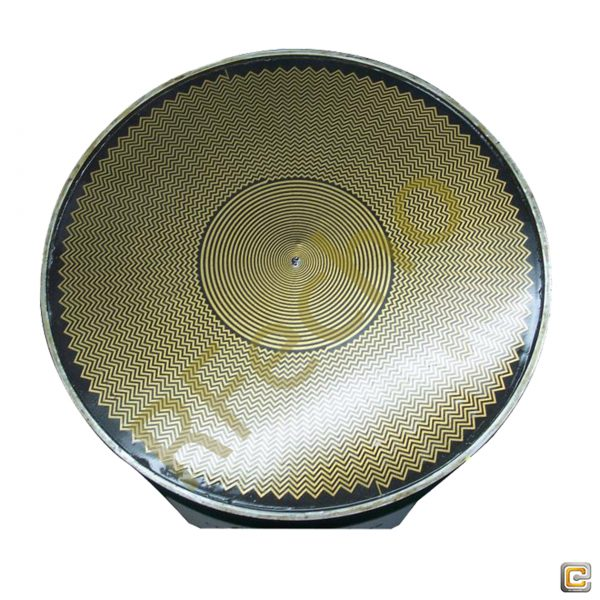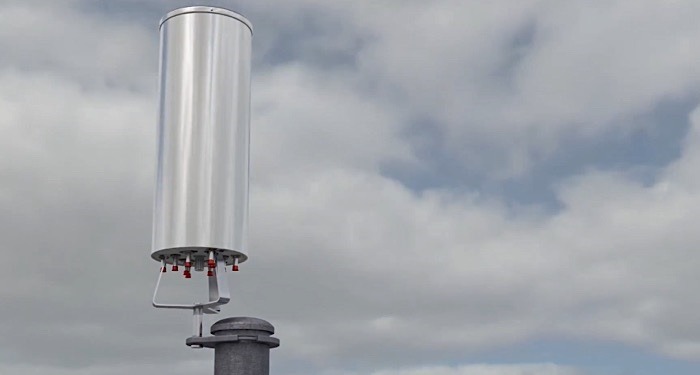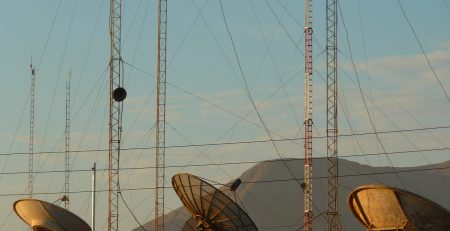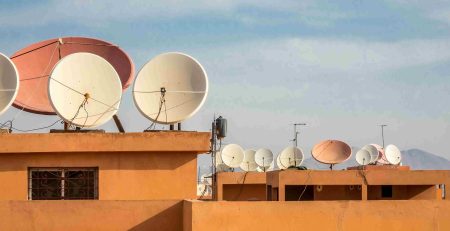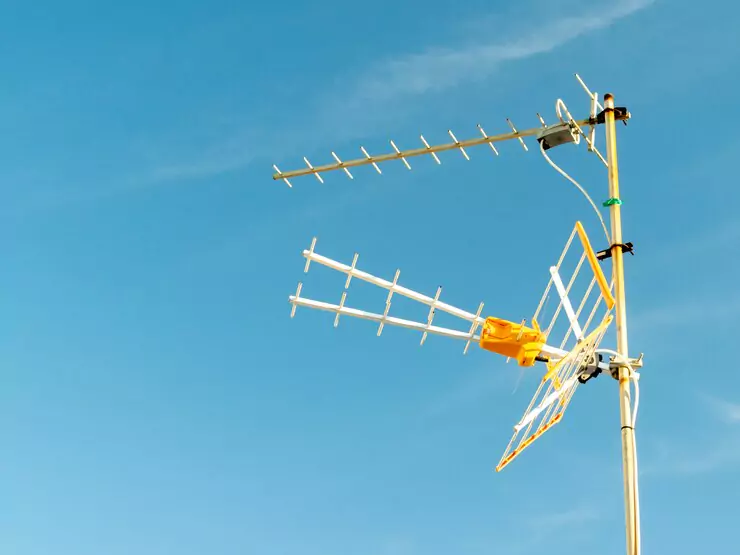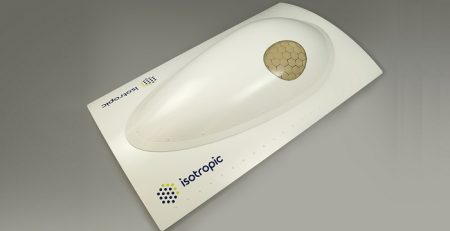Radio Antenna: Understanding Its Essential Uses and Functions
What Are Radio Antennas
 Definition of a Radio Antenna
Definition of a Radio Antenna
A radio antenna is a specialized type of transducer that converts radio frequency (RF) fields into alternating current (AC) or vice versa. Essentially, it is a key component in any wireless communication system, enabling effective transmission and reception of signals. The term “radio antenna” might bring to mind large, towering structures, but antennas come in various shapes and sizes, each suitable for different purposes. Understanding what a radio antenna is used for helps highlight its critical role in our interconnected world, from facilitating global communications to enabling everyday wireless interactions.
Basic Components of a Radio Antenna
Radio antennas consist of several basic components, each playing a vital role in their functioning. The radiating element, typically made from conductive metal, is responsible for capturing or emitting RF signals. Feed line or transmission line is the conduit that carries signals between the antenna and the radio transmitter or receiver. Matching devices or tuning circuits are used to ensure the antenna efficiently transfers an electrical signal. Lastly, there’s often some form of grounding element which helps in stabilizing the system and reducing interference. Each component must work in harmony to ensure the optimal performance of the radio antenna.
How Radio Antennas Work
Radio antennas operate on the principles of electromagnetism. When a current passes through the antenna, it generates an electromagnetic field, radiating energy outward as radio waves. In receiving mode, the antenna captures incoming radio waves, inducing a small current that the radio receiver processes. Different frequencies necessitate varying antenna designs to optimize the transmission and reception process. The physical properties, such as length and shape of the antenna, are crucial in determining its efficiency and effectiveness. An ideal antenna efficiently converts electrical signals into radio waves and vice versa, ensuring clear and reliable communication.
Different Types of Radio Antennas
Understanding different types of radio antennas is essential for recognizing their specific applications and functionalities.
Dipole Antennas
Structure and Functionality
Dipole antennas are among the simplest and most widely used antennas. They consist of two conductive elements or “poles” that are often equal in length. The simplest form of a dipole antenna is known as the half-wave dipole, where each pole is a quarter wavelength of the RF signal. This straightforward design allows the dipole antenna to efficiently radiate and receive signals within a narrow frequency range. Due to their symmetrical structure, dipole antennas are balanced, producing a radiation pattern that is omnidirectional in the plane perpendicular to the elements.
Common Applications
Dipole antennas are commonly used in various applications due to their simplicity and effectiveness. They are prevalent in television and FM radio broadcasting, providing reliable signal reception. Additionally, they are used in amateur radio and RFID systems. The straightforward design and ease of construction make dipole antennas a favored choice for both commercial and personal communication needs.
Monopole Antennas
Structure and Functionality
A monopole antenna is essentially a dipole antenna that has been modified by grounding one of the conductive elements. It consists of a single conductive rod or wire mounted perpendicularly over a ground plane. The ground plane, which can be a conductive surface or array of wires, serves as a reflective surface that simulates the other half of the dipole antenna, making the monopole antenna act like a dipole with half the physical length. This structure allows monopole antennas to be compact yet effective, radiating signals with a mostly unidirectional pattern.
Common Applications
Monopole antennas are widely used in applications where vertical polarization is essential. They are frequently found in car radios, mobile phones, and base stations. Their vertical structure makes them ideal for ground-based communications where a broad signal coverage is required. Additionally, monopole antennas are utilized in various types of wireless communication systems, including emergency services and some military applications.
By understanding the various types of radio antennas and their specific applications, we can better appreciate their integral role in modern communication systems. Whether it’s enabling a car radio to pick up signals or facilitating global satellite communications, radio antennas are vital components of our interconnected world.
Loop Antennas
Structure and Functionality
Loop antennas are another essential type of radio antenna, characterized by their loop-shaped conductive element. This loop can be either a small single turn or multiple turns of wire, forming a circular, rectangular, or other geometrically defined shape. The size of the loop and the frequency of operation determine its efficiency and bandwidth. Loop antennas can be categorized into small loops and large loops based on their circumference relative to the wavelength of the RF signal they handle. Typically, small loops act as magnetic dipole antennas, resonating at a desired frequency and offering significant resistance to local noise thanks to their loop-induced magnetic fields.
Common Applications
Loop antennas find applications in several domains due to their compact size and noise resistance. They are particularly useful in low-frequency and medium-frequency applications, including AM broadcasting and navigation systems. Aircraft direction finders and other navigational aids often rely on loop antennas. Additionally, loop antennas are favored in radio direction finding (RDF) as they can provide directional information based on the magnetic fields they interact with. They also serve in RFID systems and some specialized communication devices where precise frequency tuning and noise minimization are critical.
Precision Crafted Antennas by RFecho
RFecho specializes in the pinnacle of antenna technology, offering a spectrum of designs from low to THz frequencies. Our expertise spans an impressive array of products including standard gain horns, reflector antennas, and CATR feeds. We excel in creating high-power, high-integration, and highly complex solutions tailored for remote control, telemetry, and satellite positioning. Our partnerships with elite institutions and Fortune 500 companies attest to our innovation and quality.
Key Uses of Radio Antennas
Knowing the primary applications of radio antennas can help underscore their significance in various fields.
Communication Systems
Mobile Networks
In mobile networks, radio antennas are critical for establishing communication links between mobile devices and base stations. They facilitate the transmission and reception of voice, data, and multimedia signals across cellular networks. The efficiency of mobile networks largely depends on the strategic placement and design of antennas, such as cell towers equipped with multiple antennas to ensure optimal coverage and capacity. Technologies like MIMO (Multiple Input Multiple Output) further enhance network performance by utilizing multiple antennas to send and receive more data simultaneously, leading to improved connectivity and data transfer rates.
Satellite Communication
Radio antennas are integral to satellite communication systems, enabling long-distance communication and data transmission across the globe. Ground-based parabolic dish antennas transmit signals to satellites orbiting the Earth, which then relay these signals to other locations. These antennas must be highly directional to ensure precise alignment with the satellite. Satellite communication antennas are used in various applications, including global television broadcasting, military communications, weather monitoring, and global positioning systems (GPS). The ability to maintain reliable communication links over vast distances highlights the critical role of radio antennas in satellite systems.
Broadcasting Systems
Television Broadcasting
Television broadcasting relies heavily on radio antennas to transmit audio-visual content to a wide audience. Broadcast television stations use high-power transmitters paired with large antennas to send signals over the air to household receiving antennas. The effectiveness of these broadcasts is influenced by the antenna’s design, placement, and power. Yagi-Uda antennas, for example, are commonly used for television reception due to their high gain and unidirectional properties, ensuring clear signal reception even from distant broadcast towers.
Radio Broadcasting
Radio broadcasting utilizes AM and FM antennas to deliver audio content to listeners. AM broadcasting, which operates at lower frequencies, can cover large geographical areas, making it suitable for rural and long-distance broadcasts. FM broadcasting, on the other hand, operates at higher frequencies and provides better sound quality, though its coverage is more localized. Radio antennas used in broadcasting include dipoles, monopoles, and specialized tower structures designed to maximize the reach and clarity of the transmitted signals.
Technological Advancements in Radio Antennas
In recent years, technological innovations have led to significant improvements in radio antenna design and functionality.
Developments in Materials and Design
Advances in materials science have led to the development of more efficient and durable antennas. Modern antennas often use lightweight, corrosion-resistant materials such as aluminum and composite fibers, which enhance performance and longevity. Innovative design techniques, like fractal antennas and metamaterials, have allowed for more compact and versatile antenna structures. These advancements contribute to improved signal reception, broader frequency ranges, and enhanced integration into various devices, facilitating greater innovation in communication technologies.
Enhancements in Frequency Range and Signal Quality
Improvements in signal processing and transmission technologies have expanded the operable frequency range of radio antennas. This has enabled the development of multi-band antennas capable of handling multiple frequency bands without significant performance degradation. Additionally, innovations in beamforming and smart antenna technologies have allowed for better signal directionality and quality. By dynamically adjusting the radiation pattern, these antennas enhance signal strength and minimize interference, resulting in clearer and more reliable communication.
Challenges and Considerations in Using Radio Antennas
Despite their technological sophistication, radio antennas face several challenges and require careful consideration for optimal performance.
Environmental Interference Issues
Radio antennas are susceptible to various forms of environmental interference, such as electromagnetic interference (EMI) from other electronic devices, physical obstructions like buildings and trees, and atmospheric conditions. These interferences can distort or weaken the signal, affecting communication quality. Mitigating such issues involves strategic placement of antennas, use of shielding techniques, and implementation of advanced filtering technologies to minimize noise and enhance signal clarity.
Maintenance and Durability Factors
Maintaining radio antennas, especially those exposed to outdoor conditions, is critical to ensure their longevity and performance. Factors such as corrosion, mechanical stress, and weathering can degrade antenna components over time. Regular inspections, timely repairs, and use of durable materials can mitigate these issues. For antennas used in critical applications, such as satellite communications and emergency services, robust designs and preventive maintenance are essential to ensure uninterrupted operation.
The Future of Radio Antennas
The future of radio antennas holds promising advancements and potential impacts on communication and broadcasting industries.
Emerging Technologies
Emerging technologies such as 5G networks and the Internet of Things (IoT) are driving the evolution of radio antenna design. 5G technology requires the deployment of small cell antennas to provide high-speed connectivity with low latency, necessitating innovative antenna solutions. IoT applications, ranging from smart home devices to industrial automation, rely on efficient and compact antennas to enable seamless connectivity. Additionally, advancements in artificial intelligence and machine learning are being explored to optimize antenna performance dynamically.
Potential Impact on Communication and Broadcasting Industries
The continued evolution of radio antennas is set to profoundly impact communication and broadcasting industries. Enhanced antenna technologies will lead to more reliable and higher-quality communication networks, supporting the ever-growing demand for data and connectivity. Broadcasting systems will benefit from improved signal clarity and expanded coverage, reaching broader audiences. Furthermore, the integration of advanced antenna systems in emerging technologies will foster innovation across various fields, from autonomous vehicles to remote healthcare, shaping a more connected and efficient future.
By delving into the intricacies of radio antennas, their types, uses, and future prospects, we gain a comprehensive understanding of their indispensable role in modern communication and technology.
Trust RFecho to elevate your communication capabilities with our advanced, reliable antenna solutions.



